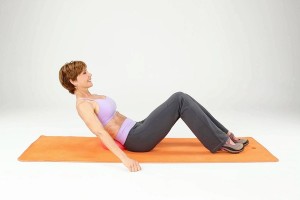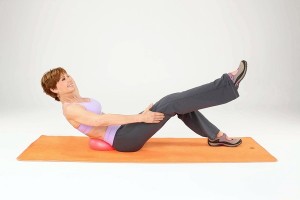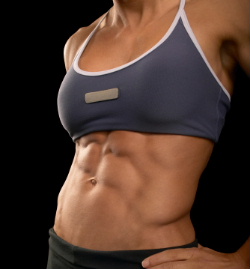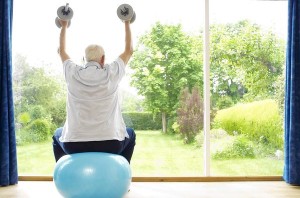You’re invited! Join my secret group to see my 12 week transformation, photos posted every 21 days! Yes, you get Carol Strom and the former LVAC aerobics director Melanie Byrne and LVAC instructors and trainers! YAYER! All you have to do is Check-in at the gym with me or after you have completed a BeachBody home workout 4 times per week and write a Google or Yelp review of your experience!!!! (now available on demand with Roku or Fire or Apple. Join or watch motivated participants compete for the annual $125,000 grand prize. Could you be next guy and girl to win $5,000 each for the monthly prize?
August 16, 2015
September 17, 2012
July 18, 2012
June 9, 2012
Using a Kettlebell Offers Several Health Advantages
 A kettlebell is one of the more modern workout equipment pieces. It is a weight similar to a dumbbell that has been around for decades. It has only been recently that the wave of training with a kettlebell has taken place.
A kettlebell is one of the more modern workout equipment pieces. It is a weight similar to a dumbbell that has been around for decades. It has only been recently that the wave of training with a kettlebell has taken place.
This weight is a round circular ball with a handle attached to the top. Only one handle is used per kettlebell and each kettlebell comes in a particular weight. Various weights are used and begin around 4 kilograms in size. The weights can go up to higher than 60 kilograms. The different weights available give people the ability to modify their workout as time goes by. Through a consistent workout, one will be able to increase the weight to provide a more challenging workout program.
An effective use of a kettlebell can provide many health benefits. The trick to taking advantage of the health benefit is to be sure one is using the kettlebell correctly. Qualified instructors are available to teach kettle bell workouts and can assist a person in optimising their own individual workout.
One of the major health benefits found as a result of working out with a kettlebell is the increase in muscle strength. Weight training provides stronger muscles and so does a kettlebell workout. Muscles will begin to develop and increase in strength within the first few weeks of a workout. The reason for this is that a kettlebell is a weight and as such is used like other weight lifting devices.
Another major benefit of using a kettlebell as a primary workout is the increased endurance one will discover. The kettlebell workouts are a full head to toe body workout. This type of activity helps improve several different body systems. As a result of stronger and healthier body systems, people have more endurance because they are not as fatigued. Fatigue happens when the body has to work harder to function. Increasing activity, such as in a kettlebell workout, helps to improve the overall health of the body’s system.
One of the top benefits and one of the most popular reasons to train with a kettlebell is the increase of rapid weight loss. Weight loss is increased by working out with a kettlebell because this workout incorporates several body systems at once. Two of the biggest ones are strength training and cardiovascular.
Overall, a kettlebell workout provides several health advantages which is why so many are beginning a kettle bell workout.
June 7, 2012
Eat less by cutting food in half
 Looking for ways to cut back on what you eat? Try cutting everything into smaller pieces–you may eat less.
Looking for ways to cut back on what you eat? Try cutting everything into smaller pieces–you may eat less.
A study found that slicing candies in half caused people to eat less of the snacks, ultimately consuming fewer calories. The research, published in the May issue of the Journal of the American Dietetic Assn., put 54 college students through two scenarios: in one, 20 pieces of candy were served whole. In another, the 20 candies were cut in half. In both scenarios the test subjects busied themselves with a computer task that acted as a distraction, since snacking is often done while preoccupied. Don’t pretend you don’t do that.
Of all participants, 33 (almost all of them normal-weight women) ate some candy. During both tests people ate about the same number of pieces; in the test with smaller pieces people ate an average of 6.2 portions of candy, while in the test with larger pieces people age an average of 6.9 pieces.
Those who ate the larger pieces consumed about 60 calories more than those who ate the smaller pieces. No substantial differences were found in the groups regarding hunger, how much the test subjects liked the candies, and whether they ate candy on a regular basis.
Researchers also noted that the connection between the size of the food and how much people ate was not affected by variables such as age, food intake control, body mass index or how much time the participants spent exercising.
Future research, the authors wrote, should look at whether altering the size of food could cause men and women of all ages and BMI ranges to eat less.
Do you cut your food into smaller pieces to trick yourself into thinking you’re eating more? Do you have similar tips for cutting back on calories? Let us know.
–
Source: LA Times Health
May 29, 2012
The Pillars of Good Health
 I was recently speaking on a panel about health and fitness when a question was shot from the audience: What is your biggest health mistake that you never shared with anyone?
I was recently speaking on a panel about health and fitness when a question was shot from the audience: What is your biggest health mistake that you never shared with anyone?
The inquiry was almost so personal that I wasn’t sure how to answer. I could talk about flaws in training or misguided beliefs about dieting that permeated my early experiences in this field. But in a moment of complete honesty, I understood the problem that needed to be addressed.
As you know, I’m a big advocate of setting resolutions year-round. I don’t like the concept of waiting to make a change. Life is fluid; we shouldn’t need an event to be the catalyst to improve. That should be something that we strive for every day. Assessing our lives does something that is rare: It provides an opportunity for honesty and accountability–two aspects that are hard for adults when it comes to personal behaviors.
The question at the panel left me with two options: Focus on a mistake that blames the industry, or look inward and accurately assess what I do poorly. I chose the latter, hoping that my message would create a heightened sense of self-awareness and lead to a better plan for improvement.
I am bad at being healthy.
That’s what I told the panel. Sure, I wasn’t identifying a specific mistake, but as I explained, my condemnation has nothing to do with my physical health. I consistently exercise three to four times per week, I eat healthily most of the time (I do sneak in cheat meals where it fits into my diet), and I don’t take many unnecessary risks that would put my body in danger.
I also don’t sleep enough, work around the clock, don’t see my friends as much as I should, could check in on my parents more, and probably should find more time for my amazing (and very understanding) wife.
True health isn’t just physical. In reality, there are four pillars that are integral to how you feel, who you are, and what you can accomplish in your life. It’s a combination of physical, emotional, psychological, and social.
And just like training, if any of those areas are weak, you should focus on that area and make it stronger.
For many people, the physical aspect is what’s lacking. We convince ourselves that being social, working, and spending time with the family supersedes the need to exercise or make smart dietary choices; but if you don’t have a healthy body, you are limiting the life you can have. It’s that simple. Everything starts with your body–but that’s not where it ends. If you spend all your time focusing on your body, you miss out on all the other aspects of life that make your time worthwhile.
The best advice I can offer is to constantly take inventory of your entire life, find areas that need improvement, and take action. Call friends today that you haven’t reached out to in a while. Find more time for sleep. Work harder if you’ve been coasting on the job. (Or work smarter if you’re always burning the midnight oil) Tell your parents you love them. Surprise your significant other with something completely unnecessary but totally worthwhile. Make time for your hobbies and the activities you enjoy. Or treat yourself to a day of complete relaxation so you can recharge.
Be honest with your assessment and then train your weakness.
The process might be humbling, but it’ll do more for improving your life than any diet or fitness plan. It will give you the awareness of the type of life you want to create and the gaps between who you are and what you want to be.
While perfection is not a realistic goal for anything in life, simply being aware of what you could be doing better and working towards that balance will help you live a healthier, happier, and longer life
–
Source: LIVESTRONGMay 26, 2012
Abdominal training
 To intensify your abdominal training and avoid neck pain, try using a firm pillow behind your back. It’s an ideal way to support your back while focusing on small contractions to bring your chest toward your pelvis.
To intensify your abdominal training and avoid neck pain, try using a firm pillow behind your back. It’s an ideal way to support your back while focusing on small contractions to bring your chest toward your pelvis.
Sit on a level padded surface with a firm pillow placed behind your lower back. Bend your knees and place your feet on the floor, hip-width apart. Inhale to begin. On an exhalation, lean back slightly and press your navel toward your spine. Tuck your hips under and focus on pushing your abs firmly against the pillow. Stretch your arms forward, keeping your chest lifted and your abs contracted. Pause for two breaths.
Without releasing your abdominal contraction, inhale and slowly raise your arms until they are above your head. It’s very important to keep your navel pressed down toward the pillow and your toes pressed into the floor as you raise your arms. Pause in this position for a few seconds. Exhale and lower your arms to the start position. Repeat 12 to 15 times, then rest for 30 seconds. Do three sets.
–
Source: LA Times Health
March 31, 2012
Dumbbells can make you brainy
March 30, 2012
Fitness Tips: Building a strong core
Building a Strong Core
 We rely on strong core muscles to stabilize the spine and help prevent injuries during everyday activities and sports. This exercise requires your abs to stay tight against the movement of the arms and legs.
We rely on strong core muscles to stabilize the spine and help prevent injuries during everyday activities and sports. This exercise requires your abs to stay tight against the movement of the arms and legs.
Sit upright on a flat, level surface with your knees bent and feet flat on the floor. Place a small, inflatable ball or firm pillow behind your waist. On an exhalation, create a C-curve with your spine, pressing the back of your waist against the ball. Maintain pressure against the ball as you bring your arms out to the sides and rest your hands on the floor. Pause for 2 seconds.
Keeping your abdominal muscles firm, raise your arms in front of your chest and extend your right leg until it’s straight. Pause for 3 seconds in this position. Remember to press your navel toward your spine to target your abdominal muscles. Lower your arms and then switch legs. Repeat 12 to 16 times, continuing to alternate legs.
March 29, 2012
Fitness Tips: Back stretch helps tighten abs
Back Stretch Helps Tighten Abs

When it comes to training your abdominal muscles, it’s good to introduce new moves into your routine so you continue to “surprise” your muscles. Otherwise there’s a tendency for them to go on autopilot and you won’t get the maximum benefit of your efforts.
Sit upright on a flat, padded surface or mat with a small inflatable ball or firm pillow behind your waist. Place your feet hip-width apart with your knees bent and feet flat on the floor. To begin, place your left hand behind your head and your right hand behind your right thigh. On an exhalation, push your lower back against the ball and raise your right leg. Pause with your shin parallel to the ceiling.
Inhale as you roll back and extend your right leg. Remember to keep your abs contracted by pressing firmly against the ball or pillow. At first, just roll back halfway, and you don’t need to fully straighten your leg. Pause for 2 seconds, then exhale and roll back up to the start position. As you get stronger, place both hands behind your head and roll back a little more. Do 12 to 16 repetitions, then switch sides and repeat.


